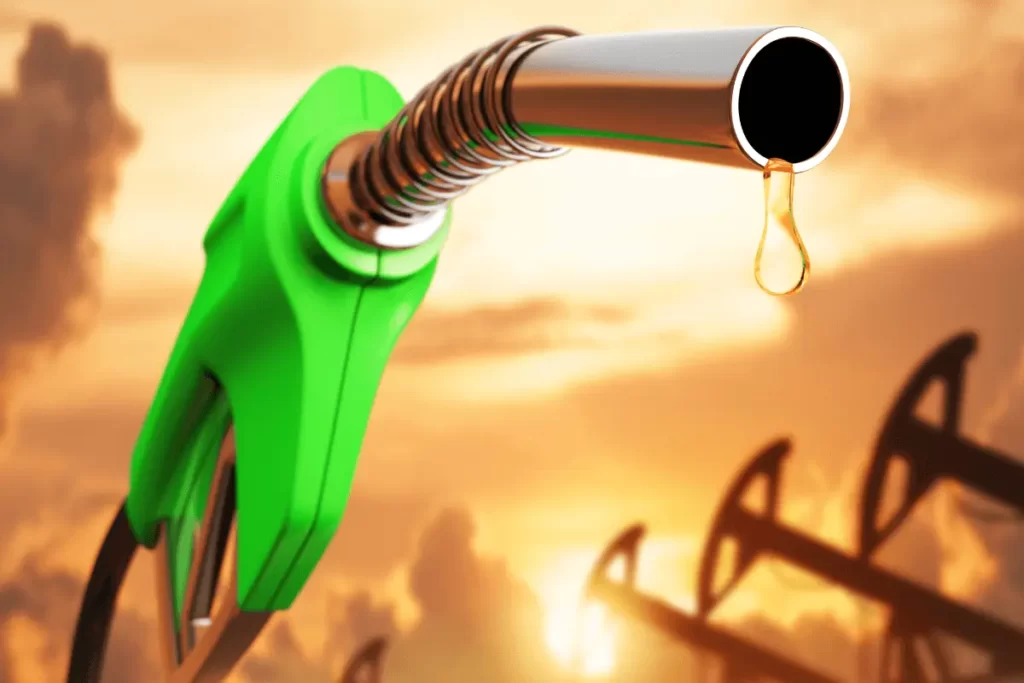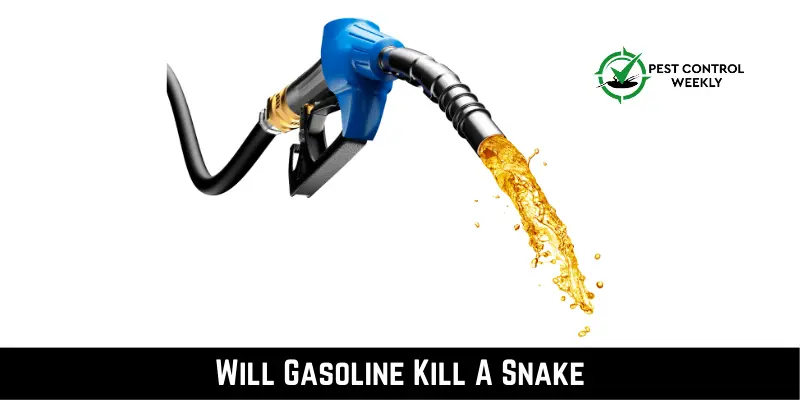Homeowners, especially those in rural locations, sometimes worry about snakes. In an effort to get rid of these reptiles, some individuals try outlandish strategies. Gasoline can be used in one such way. But will gasoline kill a snake, or is it just a myth?
Yes, gasoline kills a snake. Toxic qualities and damaging effects on snakes’ physiological systems make gasoline a potential killer. Gasoline can cause respiratory difficulties, neurological troubles, and gastrointestinal problems if inhaled, touched on the skin, or ingested.
This article will discuss the pros and cons of using gasoline to kill snakes and safer alternatives.
The Science Behind Gasoline’s Toxicity

Properties Of Gasoline
Luis Miguel Rodríguez-Antón found through experiments that gasoline is a highly refined mixture of hydrocarbons mostly sourced from petroleum and an essential fuel for contemporary life. These hydrocarbon chains, which make up gasoline, have anywhere from eight to twelve carbon atoms. To further enhance its performance in internal combustion engines, gasoline is fortified with many additives. These include detergents, anti-knock agents, and antioxidants. Despite its widespread use, gasoline harms the environment and biological creatures due to its powerful fuel properties.
Toxicity To Animals
According to J. Biochem. Tech. The potential toxicity of gasoline to animals comes from its physical qualities and the compounds it contains. Animals can suffer from severe poisoning if they are exposed to gasoline fumes or consume the liquid. Gasoline’s hydrocarbon components are lipophilic, which means they readily break down in fats and may travel throughout an animal’s fat-rich tissues and organs. Acute or chronic organ damage might result from this invasion disrupting cellular function.
Specifically, snakes are vulnerable to the dangers of gasoline. Gasoline may harm snakes in the same way it is other creatures, whether they touch it topically, inhale it, or consume it. Gasoline, which is necessary for the snake’s survival, can harm its integumentary system, which controls body temperature, holds moisture, and provides protection. In addition, the toxicity of gasoline can cause respiratory difficulty, confusion, and even death for the snake.
How Does Gasoline Affect Snakes?
Respiratory system
Gasoline poses multiple risks to a snake’s respiratory system. Gasoline fumes can irritate the airways and lungs of these serpentine critters, leading to inflammation and respiratory distress. Snakes use their sense of smell to find their way about and hunt for food; the strong odor of gasoline can overwhelm the snake’s sense of smell, leaving it bewildered and defenseless.
The poisonous chemicals in gasoline can interfere with the snake’s respiratory system on a cellular level, preventing the necessary exchange of oxygen and carbon dioxide. Therefore, a snake exposed to gasoline for an extended period may experience oxygen deprivation, leading to respiratory failure and death.
Nervous system
The nerve system of a snake is another key target of gasoline’s harmful effects. Benzene, toluene, and xylene are just a few of the neurotoxic substances found in gasoline that can seep into the snake’s tissues and upset its fragile neurological system. Disorientation, tiredness, and tremors are just a few of the neurological symptoms that can result from these substances disrupting the passage of nerve impulses. Seizures, comas, and even death can occur in snakes exposed to gasoline since the toxicity eventually overwhelms the animal’s ability to maintain life.
Digestive system
The digestive tract of a snake can be severely damaged by ingesting gasoline, which unfortunately happens rather frequently. A snake can ingest gasoline-soaked substrate or prey exposed to hazardous material as it moves through polluted areas.
Gasoline’s lipophilic properties make it easy to penetrate the snake’s digestive system and disrupt the healthy balance of enzymes and gut flora required for digestion. Snakes may have trouble digesting their food if their digestive system is upset. Symptoms include nausea, vomiting, and diarrhea. A snake can die from internal bleeding or organ failure after ingesting gasoline.
Why Killing Snakes Isn’t The Best Solution?
Ecological Role of Snakes

Snakes are crucial to ecosystems because they help keep everything in check. These extraordinary reptiles play important roles in the food cycle as predators and prey. Predators like snakes keep rodents, bugs, and other small animal populations in check, reducing the risk of illness and preventing overpopulation. Snakes aid in nutrient cycling because they consume food and then excrete waste that may be used as plant fertilizer.
On the other side, many predators rely on snakes as a source of sustenance. This includes birds of prey, mammals, and even other snakes. Removing snakes from an environment can have far-reaching detrimental effects, including altering population dynamics, upsetting food webs, and reducing biodiversity. The ecological value of these misunderstood animals must be acknowledged, and non-lethal solutions must be considered for dealing with perceived snake threats.
Legal Considerations

There are serious legal consequences for killing snakes, which is another strong incentive to avoid doing so. Laws and restrictions are in place to safeguard native animals, such as snakes. Injuring or killing endangered or vulnerable species without proper documentation is prohibited. The penalties for breaking these rules can be severe, including jail time.
In addition, poisonous compounds, such as gasoline, can pollute soil, water supplies, and other living creatures. Therefore their usage to kill snakes is an environmental risk. It’s possible that using poison to kill snakes is unethical and against the law. Understanding local snake protection laws and regulations, as well as investigating humane snake management options like hiring a professional wildlife removal agency or implementing snake deterrent measures, is crucial.
Safer Alternatives for Snake Control
Preventive Measures
The most ethical and eco-friendly method of dealing with snakes is to take preventative measures to reduce the number of times they are encountered on your property:
- Snakes are less likely to enter a yard that has been kept tidy and clear of debris.
- Keep the yard neat by cutting the grass and removing any trash that has accumulated.
- If you want to keep snakes out of your home, seal any openings in the floor, walls, or windows.
- The reduction of rodents and other small animal populations is also important since they provide snakes with a food supply.
- Keep snakes away by keeping their food sources hidden as much as possible. This includes keeping pet food and bird seed in sealed containers, picking up dropped produce from the garden, and using correct trash disposal procedures.
- Humane Methods of Removal
Other Fuels And Chemicals Repel Snakes
If, despite your best attempts, a snake does end out on your property, there are humane ways to get rid of it:
- The best and safest way to get rid of animals is to hire a professional agency. These professionals have the expertise and tools to catch and remove the snake for everyone involved safely.
- Using snake tongs or a delicate hook to lift and move the snake to a safe spot away from your property is a viable option if you are comfortable doing so.
- To prevent bites, always use caution around snakes and always wear protective gear and gloves.
- You can also employ a special trap that will catch the snake without harming it.
- After capturing the snake, it can be moved to a more suitable environment.
- To reduce the snake’s stress, it is important to check on the trap frequently and release it as soon as possible.
Conclusion
In conclusion, due to its poisonous qualities and destructive influence on the ecosystem, gasoline poses a major threat to snakes and other species. The use of gasoline to kill snakes is not only unethical but may also be illegal, depending on the specifics of the legislation in question. Safer, environmentally preferable options, including as preventative measures, humane removal procedures, and non-toxic snake repellents, should be used instead. It is possible to safeguard both human interests and the well-being of these intriguing reptiles by employing snake management methods that are both responsible and humane.
FAQs
What Does Gas Do To Snakes?
Snakes’ respiratory, neurological, and digestive systems can all suffer significantly from prolonged contact with gasoline. Gasoline can irritate the respiratory system and the skin if its fumes are breathed in or come into contact with the skin. The neurotoxic effects of gasoline include cellular dysfunction, confusion, and lethargy in exposed snakes. Gasoline poisoning can cause digestive issues, nutritional loss, and internal bleeding. The degree and length of exposure define the severity of the harm, which might be permanent disability or death.
Is It Legal To Use Gasoline To Kill Snakes?
Gasoline snake killing is not only morally dubious but may be illegal in some places. Killing some protected species in several countries and areas is unlawful without proper documentation. Using gasoline to kill snakes is illegal because of the damage it does to the environment and the potential for human and animal health risks.
Are All Snake Repellents Harmful?
To be sure, not all snake repellents are safe. Products that repel snakes without inflicting major harm often contain natural materials like essential oils or plant extracts. If the repellent is consumed or comes into contact with the snake’s skin or eyes, it can still cause injury. Therefore, it’s important to read and follow the label’s instructions. Consider the snake repellent’s safety and environmental impact before applying it anywhere on your property.
References
Luis Miguel Rodríguez-Antón, Fernando Gutiérrez-Martín, Carmen Martinez-Arevalo, Experimental determination of some physical properties of gasoline, ethanol and ETBE ternary blends, Fuel, Volume 156, 2015, Pages 81-86, ISSN 0016-2361, https://doi.org/10.1016/j.fuel.2015.04.040.

